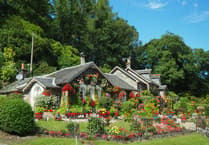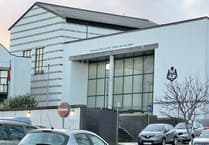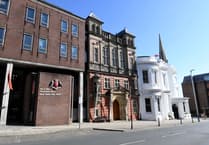One of our main selling points is our scenic beauty and unspoilt landscapes – and quite right.
Many sources confirm that.
So, our visitor economy is substantially a consequence of our ability to protect our land and seas, with modest roads and a reasonable number of heritage features. We obtained the UNESCO Biosphere status, probably in part because we have something special here.
There is a requirement to generate renewable energy locally for a number of reasons and absolutely we must.
If we were to accept that the projected annual power generation from an onshore wind facility could generate say 105 to 130 GWh it would be a decent help to reduce our consumption of fossil fuel fired electricity and therefore be a reduction in our annual CO2 emissions.
However, if we also assume there will be development of a proposed new sector for production of cannabis for which power consumption is known to be very high (in the order of 140GWh annually in total for just the two developments currently under planning consideration, even if such production will be installing solar to assist), our gas-powered electricity consumption may still rise.
Certainly, there will then be no great overall carbon emissions reduction, nor likely much green power generally available to the Manx public.
When you further consider that businesses progressively have to disclose in financial statements and public data what their ESG efforts are, and this is a very big deal for many of our current businesses located here or thinking about coming here, as well as their investors, a new and considerable problem emerges.
How can you determine which businesses benefit, if at all, from renewables? What job losses may that result in?
Is the proposal for an onshore wind facility. possibly a taxpayer-funded investment (likely £40m or more, and having seen capital project overspend in the past it is very likely a lot more) simply to compensate for the burgeoning of emissions that would otherwise result from the provision of power to say, the cannabis industry?
Business Isle of Man’s frequently-asked questions document estimates that the sector will generate around 250 jobs and about £3m a year ‘in annual benefit’.
When you also factor in the likely partial (or possibly near total) destruction of an existing area of nature, like Earystane/Scard which is largely existing with a fairly low human impact, that has numerous endangered or protected species residing in or near it, such as raptors, bats and lizards, you surely have to ask if it is worth it. It is also an area (approx. 72 hectares) of mainly heath, trees, moss and variety of plants with considerable carbon sequestration, plus it is forming part of the catchment for the Colby River.
Are we seriously thinking that the potential devastation of such a unique area of nature to the detriment of very substantial parts of the southern views, nature and tourist business is a sensible solution? Is it not what is called shooting yourself in the foot?
And what about the businesses that will either leave or not come, if their ESG criteria cannot be met because we failed to take into full account the demands of new and as yet unestablished industries?
I am personally not against onshore wind at all, but consideration must surely be given to siting, the overall impact and who the beneficiaries will be.
It almost certainly will not be nature nor will it enrich biodiversity, the things we should do our utmost to protect.
Clearly, we should be attempting a reduction in emissions overall.
A very careful study ought to be made of all impacts and alternatives, so we should certainly not accept what appears to be a rushed decision.
Name and address supplied
This letter was first published in the Isle of Man Examiner of August 15.
Share your views with our readers.
Write to: Opinions, Isle of Man Examiner and Manx Independent, 18 Finch Road, Douglas, IM1 2PT or email:
Don’t forget to include your name, FULL home address and a daytime phone number even if you want to be anonymous in print.




